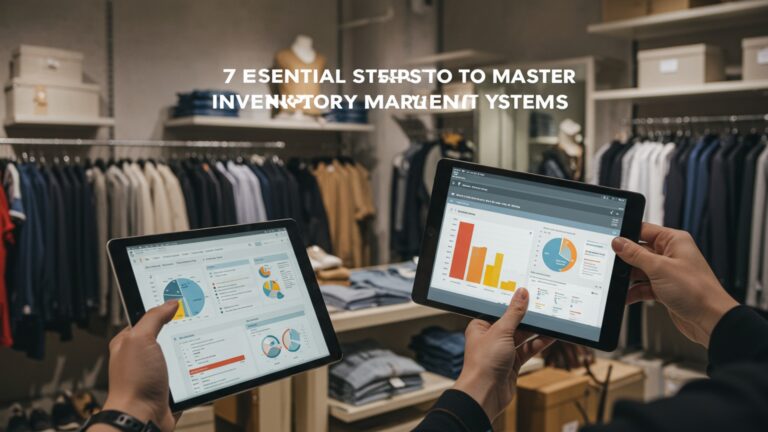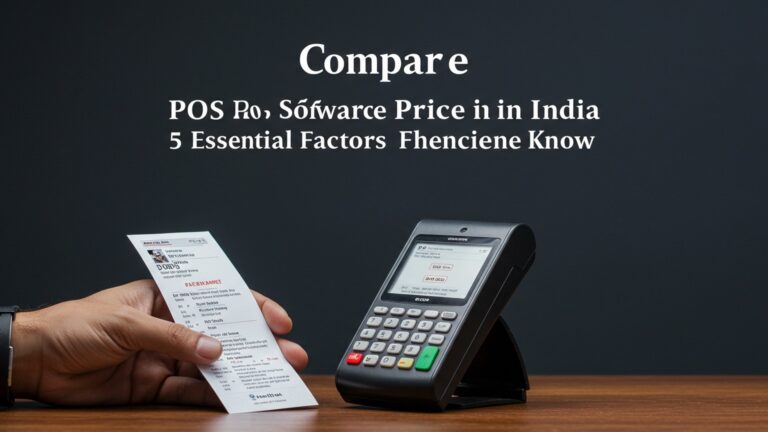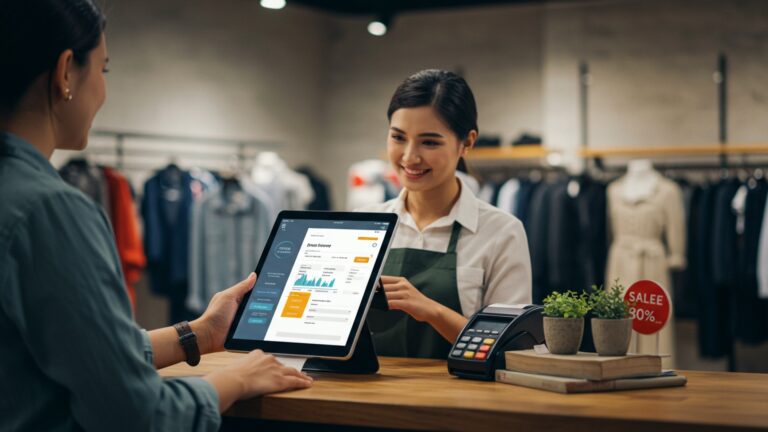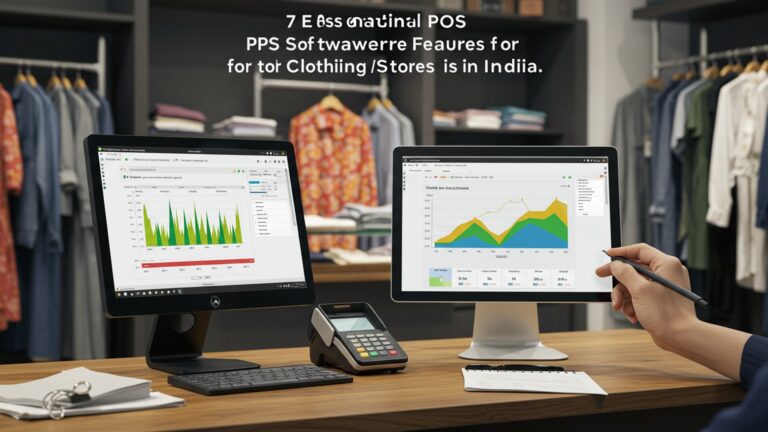10 Essential Multi Outlet Clothing POS System Features for Retail Success
Navigating the dynamic landscape of multi-outlet clothing retail demands more than just basic transaction processing; it requires a sophisticated multi outlet clothing POS system that acts as the central nervous system for your entire operation. As omnichannel strategies dominate, seamless inventory synchronization across physical stores and e-commerce platforms has become paramount, preventing stockouts and ensuring consistent customer experiences. Modern cloud-based systems now offer real-time sales analytics and unified customer profiles, enabling data-driven merchandising decisions and personalized loyalty programs that transcend individual store locations. Embracing these advanced capabilities empowers retailers to optimize stock levels, streamline returns. enhance operational efficiency from a single, integrated platform, driving profitability in a competitive market.

Centralized Real-time Inventory Management
For any clothing retailer operating across multiple locations, knowing exactly what stock you have, where it is. its status is paramount. A sophisticated multi outlet clothing POS system provides a centralized inventory management hub that updates in real-time. This means that when a t-shirt is sold in your downtown boutique, the inventory count for that specific SKU (Stock Keeping Unit), size. color is immediately adjusted across all your stores and online platforms.
This feature goes beyond simple counting. It encompasses:
- SKU Tracking
- Stock Transfers
- Bundling and Kitting
- Perpetual Inventory
Detailed tracking of each unique product variant, including size, color, material. style.
Efficiently manage the movement of merchandise between outlets, reducing waste and ensuring popular items are always where they’re needed most. For example, if a particular dress is selling out fast in Outlet A but has surplus in Outlet B, the system facilitates a quick transfer.
The ability to sell multiple items together as a single unit (e. g. , a shirt and tie combo) while accurately deducting individual components from inventory.
Constant, real-time updates ensure your inventory records are always accurate, preventing overselling or stockouts. This is critical for maintaining customer satisfaction and optimizing sales opportunities.
Without centralized inventory, retailers face significant challenges, including inaccurate stock counts leading to disappointed customers, inefficient stock transfers. difficulty in identifying best-selling items across the entire business. A robust multi outlet clothing POS system solves these by providing a single source of truth for all inventory data.
Seamless Multi-Channel Sales Processing
In today’s retail landscape, customers expect a unified experience whether they’re shopping in-store, online, or a combination of both. An essential feature of a modern multi outlet clothing POS system is its ability to handle sales and transactions flawlessly across all channels. This extends beyond merely processing a purchase; it includes managing returns, exchanges, gift cards. loyalty points consistently across every touchpoint.
Key components of seamless multi-channel sales processing include:
- Omnichannel Order Management
- Diverse Payment Options
- Integrated Loyalty Programs
- Sales Promotions and Discounts
Customers can buy online, pick up in-store (BOPIS), or return an online purchase to any physical outlet. This flexibility significantly enhances the customer experience.
Support for various payment methods, including credit/debit cards, mobile payments (Apple Pay, Google Pay), contactless payments, gift cards. even buy-now-pay-later (BNPL) services.
Customer loyalty points and rewards should be accessible and redeemable at any store location or online, fostering repeat business.
The system must apply promotions consistently across all channels, preventing discrepancies that can frustrate customers or lead to revenue loss. For instance, a “Buy One Get One Free” offer should be valid whether the purchase is made in Outlet A or on the e-commerce site.
Consider a scenario where a customer buys a jacket online and wants to exchange it for a different size at your nearest store. A truly integrated multi outlet clothing POS system allows the store associate to quickly look up the online order, process the exchange. update inventory instantly, providing a hassle-free experience for the customer.
Comprehensive Customer Relationship Management (CRM)
Building lasting relationships with your customers is fundamental to retail success, especially in the competitive clothing sector. A powerful multi outlet clothing POS system integrates robust CRM capabilities that allow you to capture, manage. leverage customer data effectively. This isn’t just about storing names and email addresses; it’s about understanding purchasing habits, preferences. engagement across all your outlets.
A comprehensive CRM module typically offers:
- Detailed Customer Profiles
- Loyalty Programs
- Targeted Marketing
- Customer Feedback and Service History
Store purchase history, preferred sizes, brands, contact insights. even notes from sales associates about specific preferences.
Create and manage tiered loyalty programs, points accumulation. reward redemption that work seamlessly across all your stores and online presence.
Use purchase data to segment customers and send personalized promotions, new arrival alerts, or birthday discounts. For example, if a customer frequently buys designer jeans, you can alert them when new stock from their preferred brand arrives.
Track interactions, complaints. resolutions to improve service quality and proactively address issues.
A retailer using a multi outlet clothing POS system with strong CRM can, for instance, identify customers who haven’t purchased in a while from any of their locations and send them a personalized re-engagement offer. This level of insight and personalization significantly boosts customer retention and lifetime value.
Powerful Reporting and Analytics
Data is the new currency. a sophisticated multi outlet clothing POS system empowers retailers with the insights needed to make informed business decisions. Robust reporting and analytics tools aggregate data from all your stores and online channels, providing a holistic view of your business performance.
Essential reports and analytical capabilities include:
- Sales Performance
- Inventory Turnover
- Customer Insights
- Employee Performance
- Profitability Reports
Track sales by store, employee, product, category, time of day. even specific promotions. Identify your top-performing outlets and products.
comprehend which items are selling quickly and which are slow-moving, helping you optimize stock levels and prevent dead stock.
examine customer demographics, average transaction value, most frequent purchases. loyalty program engagement.
Monitor individual sales metrics, commissions. productivity to identify top performers and areas for training.
Gain insights into gross margins, net profit. operational costs across your entire multi-outlet operation.
Imagine a clothing retailer discovering through their multi outlet clothing POS system’s analytics that a specific line of eco-friendly apparel is performing exceptionally well in their urban outlets but not as much in suburban ones. This insight allows them to adjust marketing strategies, inventory allocation. even future buying decisions across their entire chain.
Here’s a simplified example of how sales data might be presented for comparison:
| Metric | Outlet A (Downtown) | Outlet B (Suburban) | Outlet C (Online) | Total |
|---|---|---|---|---|
| Total Sales (Last Month) | $150,000 | $90,000 | $120,000 | $360,000 |
| Average Transaction Value | $75 | $60 | $80 | $71. 43 |
| Top Selling Category | Formal Wear | Casual Wear | Accessories | N/A |
Employee Management & Performance Tracking
Your staff are the face of your brand. managing them effectively across multiple locations is vital. A robust multi outlet clothing POS system provides tools to streamline employee management, track performance. even calculate commissions, ensuring operational efficiency and motivating your team.
Key employee management features often include:
- User Access Roles
- Time Clock Integration
- Sales Performance Tracking
- Commission Management
Assign specific permissions to different staff members based on their roles (e. g. , cashier, manager, owner). This controls what they can access and modify within the POS system, enhancing security and accountability.
Employees can clock in and out directly through the POS, simplifying payroll processing and tracking hours worked across all stores.
Monitor individual sales figures, average transaction values. conversion rates for each employee. This helps in identifying top performers, providing targeted training. recognizing achievements.
Automatically calculate commissions based on predefined rules, whether it’s a percentage of sales, per item, or based on specific product categories. This is particularly useful in clothing retail where sales associates often work on commission.
For example, a regional manager can use the multi outlet clothing POS system to compare the sales performance of associates across different stores. If an associate in Outlet A consistently outperforms others in upselling accessories, their techniques can be shared as best practices with the team in Outlet B.
Multi-Store Operations & Data Synchronization
The very essence of a multi outlet clothing POS system lies in its ability to manage and synchronize operations across all your physical locations seamlessly. This feature provides a single, unified platform from which you can oversee and control every aspect of your retail chain, ensuring consistency and efficiency.
Core functionalities for multi-store operations include:
- Centralized Product Catalog
- Unified Pricing & Promotions
- Gift Card & Store Credit Universality
- Real-time Data Synchronization
Manage all product data, including descriptions, images, pricing. variants, from a single dashboard. Any update made here is instantly reflected across all stores and your e-commerce site.
Implement store-wide or location-specific pricing strategies and promotions with ease. For instance, you can run a flash sale on winter coats in your northern outlets while maintaining regular pricing in your southern stores.
Gift cards purchased at one store can be redeemed at any other location or online, enhancing customer convenience and loyalty.
All sales, inventory changes, customer data. employee activities are synchronized across your entire network in real-time. This eliminates data silos and ensures that every outlet operates with the most up-to-date data.
The technical backbone of this often involves cloud-based architecture, where data is stored securely on remote servers and accessible from anywhere with an internet connection. This ensures that even if one store loses connectivity temporarily, operations can resume smoothly once reconnected. data integrity is maintained across the entire system. Without this, managing pricing discrepancies or inconsistent promotions across stores would be a logistical nightmare.
E-commerce Integration for Unified Retail
For clothing retailers, having an online presence is no longer optional; it’s essential. A truly effective multi outlet clothing POS system offers robust, two-way integration with your e-commerce platform, creating a cohesive shopping experience and streamlining operations between your physical and digital storefronts.
This integration typically encompasses:
- Synchronized Inventory
- Unified Customer Data
- Order Fulfillment Flexibility
- Product data Management (PIM)
Real-time inventory updates between your physical stores and online store. When an item sells online, it’s removed from available stock in all stores. vice-versa. This prevents overselling and ensures accurate stock counts for customers.
Customer profiles, purchase history. loyalty points are shared between online and offline channels, enabling personalized marketing and a consistent customer experience regardless of where they shop.
Orders placed online can be fulfilled from any of your physical stores, optimizing shipping costs and delivery times. This “ship from store” capability turns your physical locations into mini-distribution centers.
Manage all product details, images. descriptions from a single point, pushing updates to both your POS and e-commerce site simultaneously.
A great example of this in action is a customer browsing your online store, seeing an item they like. then checking its availability at their nearest physical outlet using the “check store availability” feature powered by the integrated POS system. This seamless flow between online and offline channels is a hallmark of modern retail success.
Robust Vendor & Purchase Order Management
Efficiently managing your supply chain is critical for profitability and maintaining optimal stock levels in a clothing retail business. An advanced multi outlet clothing POS system includes comprehensive features for vendor management and purchase order (PO) processing, automating much of the procurement cycle.
Key aspects of this feature include:
- Vendor Database
- Automated Purchase Order Creation
- Receiving & Stocking
- Cost Tracking
Maintain detailed records of all your suppliers, including contact insights, terms. historical order data.
Generate purchase orders based on sales trends, current inventory levels. predefined reorder points. For example, if your inventory of a popular denim line falls below a certain threshold across all stores, the system can automatically suggest a new PO.
Efficiently receive incoming shipments, update inventory counts. reconcile deliveries against purchase orders. This reduces errors and speeds up the process of getting new merchandise onto the sales floor.
Monitor product costs from different vendors, helping you negotiate better deals and optimize your margins.
By automating purchase order management, a clothing retailer can significantly reduce the administrative burden, minimize stockouts. ensure their multi-outlet operation always has the right products at the right time. This is especially vital for seasonal clothing lines where timely inventory replenishment is key.
Advanced Security and Compliance
Protecting sensitive customer and business data is non-negotiable for any retail operation, particularly for a multi outlet clothing POS system that handles transactions across multiple locations. Robust security features and compliance with industry standards are essential to build trust and avoid costly data breaches.
Critical security and compliance components include:
- PCI DSS Compliance
- Data Encryption
- Role-Based Access Control (RBAC)
- Activity Logs & Audit Trails
- Cloud Security Measures
Adherence to the Payment Card Industry Data Security Standard (PCI DSS) is mandatory for any system processing credit card data. This ensures that cardholder data is handled securely.
All sensitive data, both in transit and at rest, should be encrypted using industry-standard protocols to prevent unauthorized access.
Define different levels of access for employees based on their roles. A cashier might only have access to the sales interface, while a manager can access reports and inventory adjustments.
Comprehensive logging of all system activities, including sales, returns, inventory adjustments. user logins. This provides an audit trail for accountability and troubleshooting.
For cloud-based POS systems, robust server security, regular backups, disaster recovery plans. protection against cyber threats are paramount.
A clothing retailer must ensure their chosen multi outlet clothing POS system not only offers these security features but also provides regular updates to combat evolving cyber threats. Compromised customer data can lead to severe financial penalties, reputational damage. a loss of customer trust that is difficult to regain.
Scalability and Customization Options
A successful retail business is one that grows. your multi outlet clothing POS system must be able to grow with you. Scalability ensures that the system can handle increased transaction volumes, more product lines. additional store locations without a drop in performance. Customization allows the system to adapt to the unique needs and workflows of your specific clothing retail brand.
Key considerations for scalability and customization include:
- Modular Architecture
- Cloud-Based Solutions
- API Integrations
- Customizable Reporting
- Configurable Workflows
A system built with modular components allows you to add new features or integrations as your business evolves, without overhauling the entire system.
Cloud POS systems are inherently more scalable than on-premise solutions, as they can easily accommodate more users, data. locations by simply upgrading server resources.
The ability to integrate with other essential retail tools such as accounting software (e. g. , QuickBooks, Xero), marketing platforms. specialized e-commerce solutions (e. g. , Shopify, Magento) is crucial for a cohesive tech stack.
The ability to create custom reports tailored to your specific KPIs and business needs, beyond the standard templates.
Adjusting the POS interface and transaction flows to match your store’s specific operational procedures, such as specific steps for processing returns or applying discounts.
For a growing clothing chain, choosing a multi outlet clothing POS system that offers strong API documentation and a developer-friendly environment means they can connect it to custom applications or specialized fashion retail tools in the future, ensuring their technology stack remains agile and future-proof. This foresight in selecting a flexible system can save significant costs and headaches down the line.
Conclusion
Navigating the complexities of multi-outlet clothing retail demands more than just a basic checkout system; it requires a sophisticated POS that acts as your central nervous system. The features discussed aren’t merely conveniences; they are strategic imperatives for growth in today’s dynamic market. For instance, real-time inventory sync across all locations, like what global brands now employ, prevents lost sales and enhances customer satisfaction. My personal tip? Prioritize a system with robust analytics and CRM capabilities. I’ve seen firsthand how retailers who leverage these insights, understanding peak sales times or popular sizes across different stores, can dramatically optimize stock allocation and personalized marketing efforts. Embrace a POS that offers seamless integration and scalability, allowing you to adapt swiftly to evolving customer demands and market trends. The right choice empowers you to transform operational challenges into competitive advantages, ensuring your brand not only survives but thrives. Take action today by evaluating your current setup against these essential features. confidently steer your clothing empire towards unparalleled success.
More Articles
8 Essential POS Software Features for Indian Clothing Stores Success
7 Essential Steps to Master Clothing Inventory Management Systems
Master 7 Key Benefits of a Modern POS for Ethnic Wear Stores
How to Choose the Best Mobile POS Software for Your Business
A Complete Guide How to Select the Best POS Billing Software for Business
FAQs
Why is a strong inventory system so crucial for my multi-outlet clothing stores?
A robust inventory system provides real-time, centralized tracking across all your locations. This means you always know what’s in stock where, preventing frustrating stockouts or overstocking and allowing for efficient transfers between stores.
How can a POS system help me keep my customers coming back?
Look for integrated CRM features. These allow you to capture customer data, track purchase history. run targeted loyalty programs or promotions. Personalizing offers based on past purchases is a great way to build lasting relationships.
Can I easily see how all my different store locations are performing?
Absolutely! A good multi-outlet POS offers comprehensive reporting and analytics. You can get a consolidated view of sales, inventory movement. employee performance across all your stores, or drill down into specific location data.
What if a customer wants to return an item bought at a different one of my stores?
No problem! Essential POS systems for multi-outlet retailers make returns and exchanges seamless across all locations. This means a customer can buy at Store A and return or exchange at Store B without any hassle, improving their experience.
Is it a pain to update product details or prices across all my stores?
Not with the right system! A key feature is centralized product catalog management. You can update product descriptions, images. prices once. those changes will automatically reflect across all your physical and even online stores.
Will this POS work with my online store too?
Many top-tier POS systems offer seamless e-commerce integration. This means your online and offline inventory, sales. customer data are synced, providing a consistent experience for shoppers and a unified view for you.
How does a modern POS speed up daily sales transactions?
These systems are designed for efficiency. They offer quick product lookup, various payment processing options (including contactless). an intuitive interface that minimizes training time and reduces checkout queues, making staff and customers happier.





